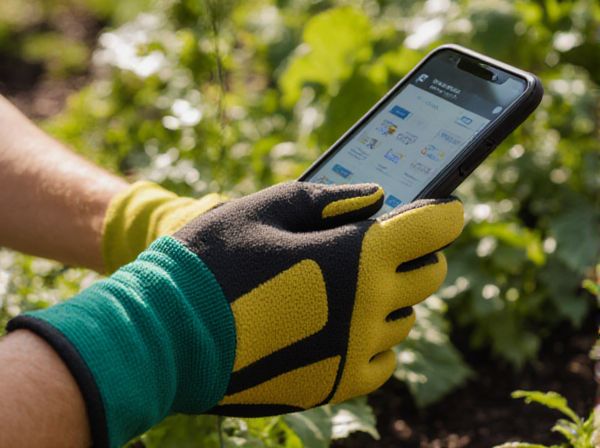
Trap cropping vs Intercropping Illustration
Trap cropping involves planting specific plants that attract pests away from the main crop, effectively reducing damage and pesticide use. Intercropping combines different crops in proximity to confuse pests and disrupt their lifecycle, promoting natural pest control and biodiversity. Both strategies enhance sustainable pest management by minimizing reliance on chemical treatments and improving crop resilience.
Table of Comparison
| Aspect | Trap Cropping | Intercropping |
|---|---|---|
| Definition | Planting sacrificial crops to lure pests away from main crops | Growing two or more crops simultaneously on the same land |
| Pest Management | Attracts and confines pests to trap crops, reducing damage to main crops | Disrupts pest cycles through crop diversity and physical barriers |
| Target Pests | Specific pest species attracted to trap crops | Broad range of pests suppressed due to crop diversity |
| Crop Yield Impact | Main crop protected, may reduce yield loss due to pest damage | May increase total yield through complementary crop interactions |
| Complexity | Requires identification and planting of effective trap crops | Requires careful planning of crop combinations and spacing |
| Implementation | Typically involves border or perimeter planting | Crops intermixed within the same field |
| Environmental Benefits | Reduces pesticide use by targeting pests specifically | Enhances biodiversity, improves soil health, reduces pests |
Understanding Trap Cropping in Pest Management
Trap cropping involves planting specific crops that attract pests away from the main crop, effectively reducing overall pest damage. This method targets pests by exploiting their feeding preferences, creating a controlled area where pests can be managed or eliminated more easily. Trap cropping enhances pest management by minimizing pesticide use and promoting ecological balance within agricultural systems.
Intercropping: A Diverse Approach to Pest Control
Intercropping enhances pest control by planting multiple crop species together, disrupting pest habitats and reducing host plant availability. This biodiversity increases natural predator populations, leading to greater biological pest suppression compared to monocultures or single trap crops. Studies show intercropping can reduce pest infestations by up to 60%, improving overall crop resilience and yield stability.
Mechanisms Behind Trap Cropping for Pest Reduction
Trap cropping works by attracting pests away from main crops, leveraging specific plants that are more appealing to target pests, thus reducing pest pressure on valuable crops. This mechanism involves the preferential feeding and oviposition behaviors of insects, which are drawn to the trap plants due to their olfactory, visual, and gustatory cues. Trap crops can disrupt pest colonization patterns and reduce pest populations by concentrating them into manageable zones, facilitating targeted pest control measures.
How Intercropping Deters Garden Pests
Intercropping deters garden pests by creating a diverse plant environment that disrupts pest host-finding behavior and reduces pest colonization. This method combines complementary crops that emit different chemical signals, confusing pests and attracting natural predators. Enhanced biodiversity in intercropping systems promotes ecological balance, minimizing pest outbreaks without relying on chemical pesticides.
Key Differences Between Trap Cropping and Intercropping
Trap cropping involves planting specific crops that attract pests away from the main crop, effectively reducing pest damage. Intercropping combines two or more crops in proximity to enhance pest control through increased biodiversity and natural predator habitats. Unlike intercropping's diversity-driven pest suppression, trap cropping relies on targeted pest diversion to protect the primary crop.
Choosing the Right Trap Crops for Your Garden
Selecting the right trap crops, such as mustard, radish, or marigold, can effectively divert pests away from main garden plants by attracting specific insects like flea beetles or aphids. Trap cropping optimizes pest management by concentrating pests on sacrificial plants, reducing damage to valuable crops, while intercropping involves mixing diverse plant species to enhance biodiversity and disrupt pest habitats. Understanding the pest spectrum and crop compatibility within your garden ecosystem ensures effective trap crop placement and maximizes yield protection.
Best Intercrop Combinations for Pest Suppression
Trap cropping utilizes sacrificial plants to attract pests away from main crops, enhancing pest management in agriculture. Intercropping combines compatible crops such as marigold with tomatoes or beans with maize, effectively reducing pest populations through natural repellent effects and enhanced biodiversity. Research shows that intercropping leguminous plants with cereals, like pigeon pea with sorghum, significantly lowers pest infestation by disrupting pest life cycles and providing habitat for beneficial predators.
Benefits and Limitations of Trap Cropping
Trap cropping attracts pests away from main crops using sacrificial plants, reducing pest damage and pesticide usage. It enhances pest management by targeting specific pests, but requires careful plant selection and monitoring to prevent trap crops from becoming pest reservoirs. Limited effectiveness in large fields and potential for increased labor are notable constraints.
Advantages and Challenges of Intercropping for Pest Control
Intercropping enhances pest control by increasing biodiversity, which disrupts pest habitats and reduces pest population buildup through natural predator attraction and competition among plants. The method improves resource utilization, leading to healthier crops with stronger resistance to pests and diseases. Challenges include increased complexity in managing different crop species, potential competition for nutrients, and the need for precise knowledge of compatible plant combinations to avoid yield reduction.
Integrating Trap Cropping and Intercropping for Sustainable Gardening
Integrating trap cropping and intercropping enhances pest management by using trap crops to attract pests away from main plants while intercropping promotes biodiversity and natural pest control. This combination reduces reliance on chemical pesticides, supports beneficial insects, and improves overall garden resilience. Sustainable gardening benefits from these strategies through improved crop yields and healthier ecosystems.
Trap cropping vs Intercropping Infographic

 gardendif.com
gardendif.com